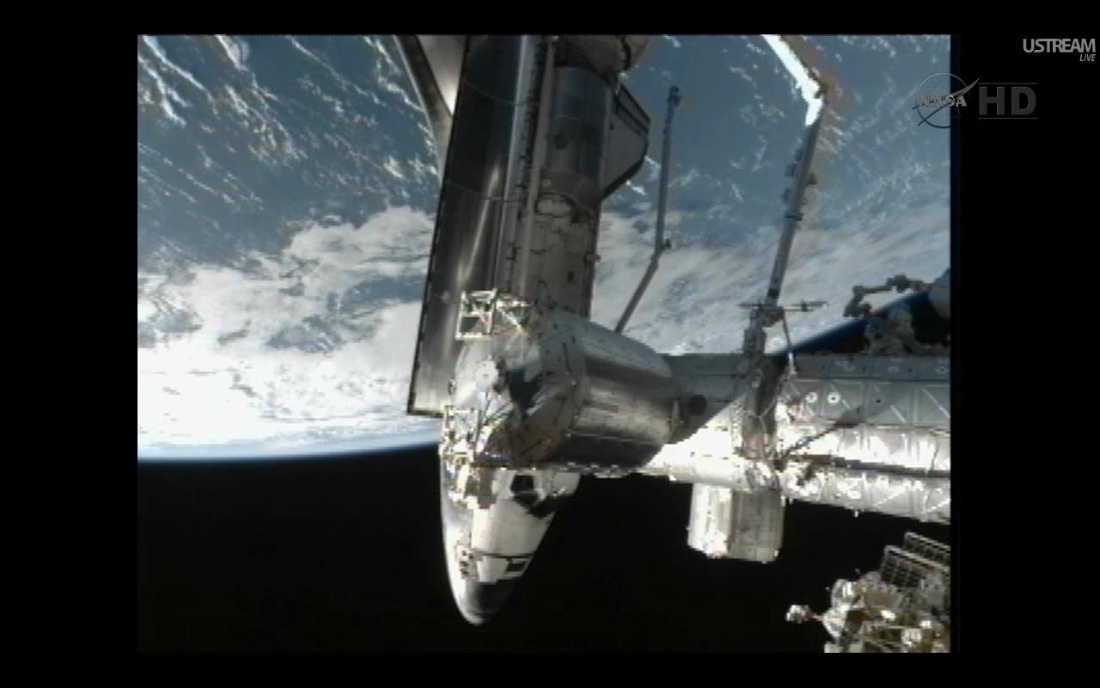NASA Tracking Potentially Dangerous Space Junk Near Shuttle, Space Station

This story was updated at 5:56 p.m. EDT.
HOUSTON – NASA is tracking a piece of space junk that could fly close to the International Space Station and the connected shuttle Atlantis, officials announced today (July 10).
Mission managers were notified of the potentially threatening piece of space trash this morning, and are continuing to observe the object to determine whether they need to take any action to avoid a collision. [Video: Space Junk Threat Grows]
"We will work through our normal procedures and processes for dealing with that," LeRoy Cain, chair of Atlantis' mission management team, said in a news briefing today. "What we were told today was very preliminary."
This potentially threatening piece of space junk is debris from a defunct Russian satellite that was launched in 1970, and is part of a known catalog of derelict objects in orbit. After further analysis, NASA will better understand the size and orbit of the debris, and whether or not it poses a threat to the shuttle and station.
Based on initial assessments, the object is expected to make its closest approach at 12:59 p.m. EDT (1659 GMT) on Tuesday (July 12), during a scheduled spacewalk by station astronauts Ron Garan and Mike Fossum.
If deemed necessary, mission managers will use small thrusters aboard Atlantis to maneuver the shuttle and station out of harm's way, and allow both the shuttle and station crews to press ahead with their mission objectives.
Get the Space.com Newsletter
Breaking space news, the latest updates on rocket launches, skywatching events and more!
"In all likelihood, it would not interfere with what we're doing on the spacewalk," Cain said.
Space junk, which consists mostly of spent rocket parts and pieces of broken satellites ranging in size, is an ongoing threat to spacecraft and satellites in orbit. Today, more than 22,000 pieces of space junk are constantly being tracked in Earth orbit.
NASA and its space station partners have procedures in place to deal with potentially threatening pieces of orbital debris if they fly within a preset safety perimeter around the station and any attached spacecraft. With advance notice, thrusters on the space station itself, or any attached vehicles such as the shuttle or Russian Soyuz spacecraft, can be used to move the complex to a higher orbit to get out of the way, for example.
NASA maintains a pizza box-shaped safety zone that measures just over 15 miles (25 kilometers) around the space station and about a half-mile (0.75 km) above and below the outpost.
"It's not uncommon," Cain explained. "There's a lot of junk in orbit. We have a very good process for knowing where they are and how to avoid them in cases where we need to avoid them. It's not unusual to have to deal with it."
You can follow SPACE.com Staff Writer Denise Chow on Twitter @denisechow. Visit SPACE.com for complete coverage of Atlantis' final mission STS-135 or follow us @Spacedotcom and on Facebook.
Join our Space Forums to keep talking space on the latest missions, night sky and more! And if you have a news tip, correction or comment, let us know at: community@space.com.

Denise Chow is a former Space.com staff writer who then worked as assistant managing editor at Live Science before moving to NBC News as a science reporter, where she focuses on general science and climate change. She spent two years with Space.com, writing about rocket launches and covering NASA's final three space shuttle missions, before joining the Live Science team in 2013. A Canadian transplant, Denise has a bachelor's degree from the University of Toronto, and a master's degree in journalism from New York University. At NBC News, Denise covers general science and climate change.